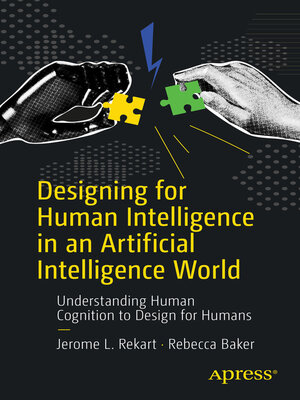Designing for Human Intelligence in an Artificial Intelligence World
ebook ∣ Understanding Human Cognition to Design for Humans
By Jerome L. Rekart

Sign up to save your library
With an OverDrive account, you can save your favorite libraries for at-a-glance information about availability. Find out more about OverDrive accounts.
Find this title in Libby, the library reading app by OverDrive.



Search for a digital library with this title
Title found at these libraries:
| Library Name | Distance |
|---|---|
| Loading... |
How we think and react has a direct impact on experience design, but often designers don't understand the "whys" behind their best practices, leaving them at risk for misusing or underutilizing those designs. Similarly, psychologists/neuroscientists don't understand the design decisions that their science is informing and how they might be leveraged further. This book explores how neuroscience and cognitive psychology inform experience design, within the modern context of research and technological advances.
With a conversational and playful tone, this book begins by grounding you in research and AI. That foundation then allows you to expand your repertoire through chapters on design-relevant cognitive phenomena such as memory, learning, and perception. By delving into how our brains handle these processes and how our designs can effectively (or ineffectively) leverage them, the book follows a journey that weaves academic learning with practical, real-world applications and examples.
With the widespread availability of generative AI tools, understanding the intersection of human cognition and design and how that knowledge can be used to build a bridge between the brain and the software has become even more critical. By understanding the brain and human behavior more completely, designers will be able to effectively use AI as an accelerator for tactical projects and provide the context that is unique to the human ability to understand the "why.”







